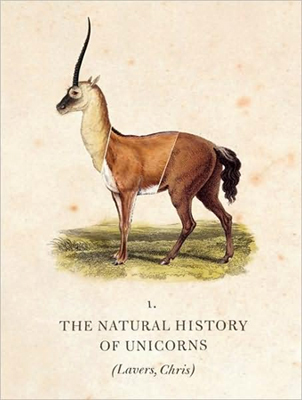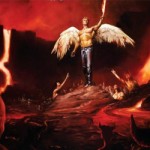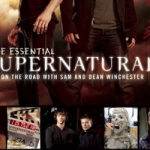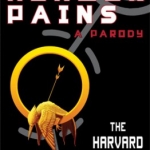
Title: The Natural History of Unicorns
Author: Dr. Chris Lavers
Publisher: William & Morrow
Release Date: August 11, 2009
Do not be confused that this is a work of fiction. Sure, sure you see the word “unicorn” and you automatically assume that is must be fantasy, but you’d be wrong. This book is an interesting look at the etiology of the unicorn myth. If most myths have at least one toe in the door of truth than the unicorn is absolutely no exception. It has more than a toe; in fact, it has a whole horn in the door. OK, that was cheesy, but believe me, this book is fascinating and educational without reading like a text book.
I have often wondered how different mythical creatures found their way into stories throughout history. Man made up stories of the gods to explain what they decided must be physical manifestations of some divine power. Why should this be limited to explaining things we can see by things we must only believe in? Just as many, if not all, cultures have creation stories and stories of heroes and gods, it seems that around the world many cultures have a unicorn myth.
What is the myth, beyond a beast with one horn? The beast was thought to be un-huntable, its horn could detect poison, it could be snared when lured by the innocence of virgin girl, the horn had medicinal properties, the hide was multi-colored. These stories and properties and more have all been attributed to the beast, but has anyone really seen a true unicorn? Chroniclers throughout history have thought so and have spent time describing in detail the animals, but is any of it true?
Animals from India to Africa to the freezing waters of the north have been attributed as either being the unicorn or, as is most likely, contributing to the unicorn myth. Horns from several different animals, including the narwhal, have been shown around the courts of Europe as proof of the existence of the animal that no one living ever seems have seen with their own eyes. There are still likely people out there that hope they will find this elusive animal; after all, the giant squid has gone from fiction to fact — why not the unicorn?
Despite the prevailing unicorn myth, the unicorn itself isn’t a static creature. It started out as an animal much like an ass or donkey, or even a goat, to being idealized as a majestic horse or even perhaps more like a stag. It had transitioned from multicolored to pure white, among other descriptive changes. Over the years, not only did the physical characteristics of the unicorn mutate, but so did the symbolism of the animal. From being a feisty animal protective of its young and deadly to attempt to catch, it was adopted by the Christians to symbolize Christ. One wonders what the unicorn will mean, if anything, to future generations.
While the unicorn still remains on the “myth” list, it has long been a compelling subject and will likely continue to be. Dr. Lavers shares with the reader his knowledge, often with a quick sense of humor, on this elusive animal. For anyone interested in how myths originated or wanting to know the facts behind the fiction, this is a truly one-of-a-kind and interesting read. I would highly recommend it.
Rating: 4.5 / 5 Stars






